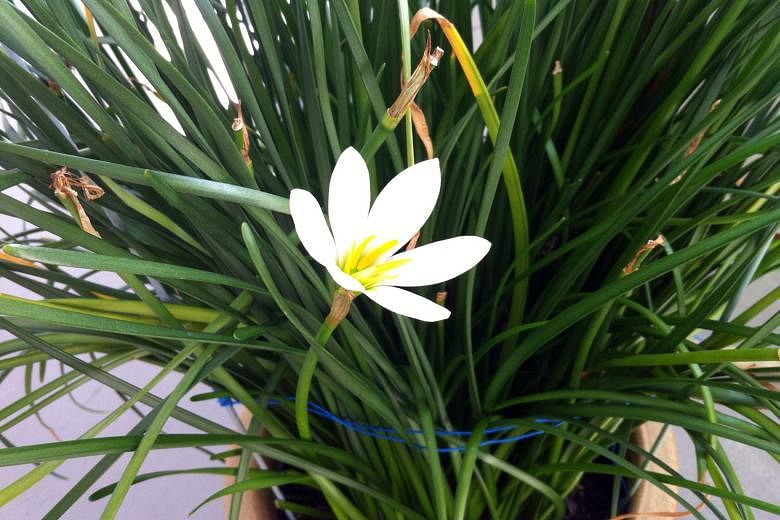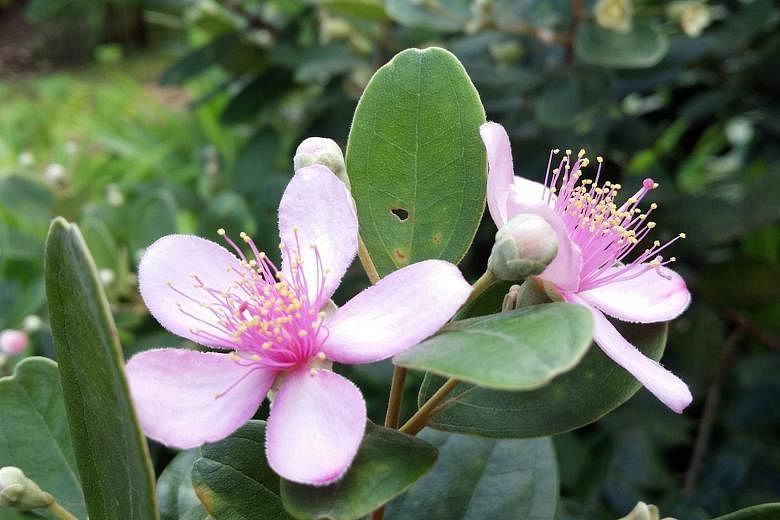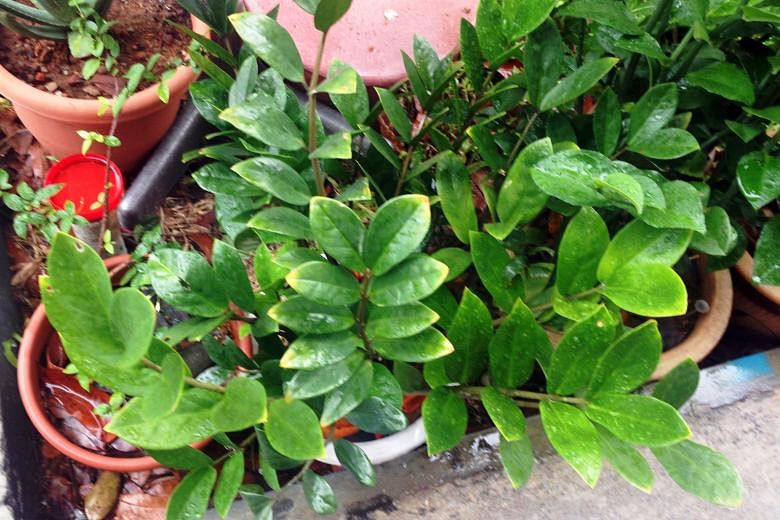Rain Lily not edible
What is this plant? It looks like a spring onion (left).
Dhilshaadh Balajee
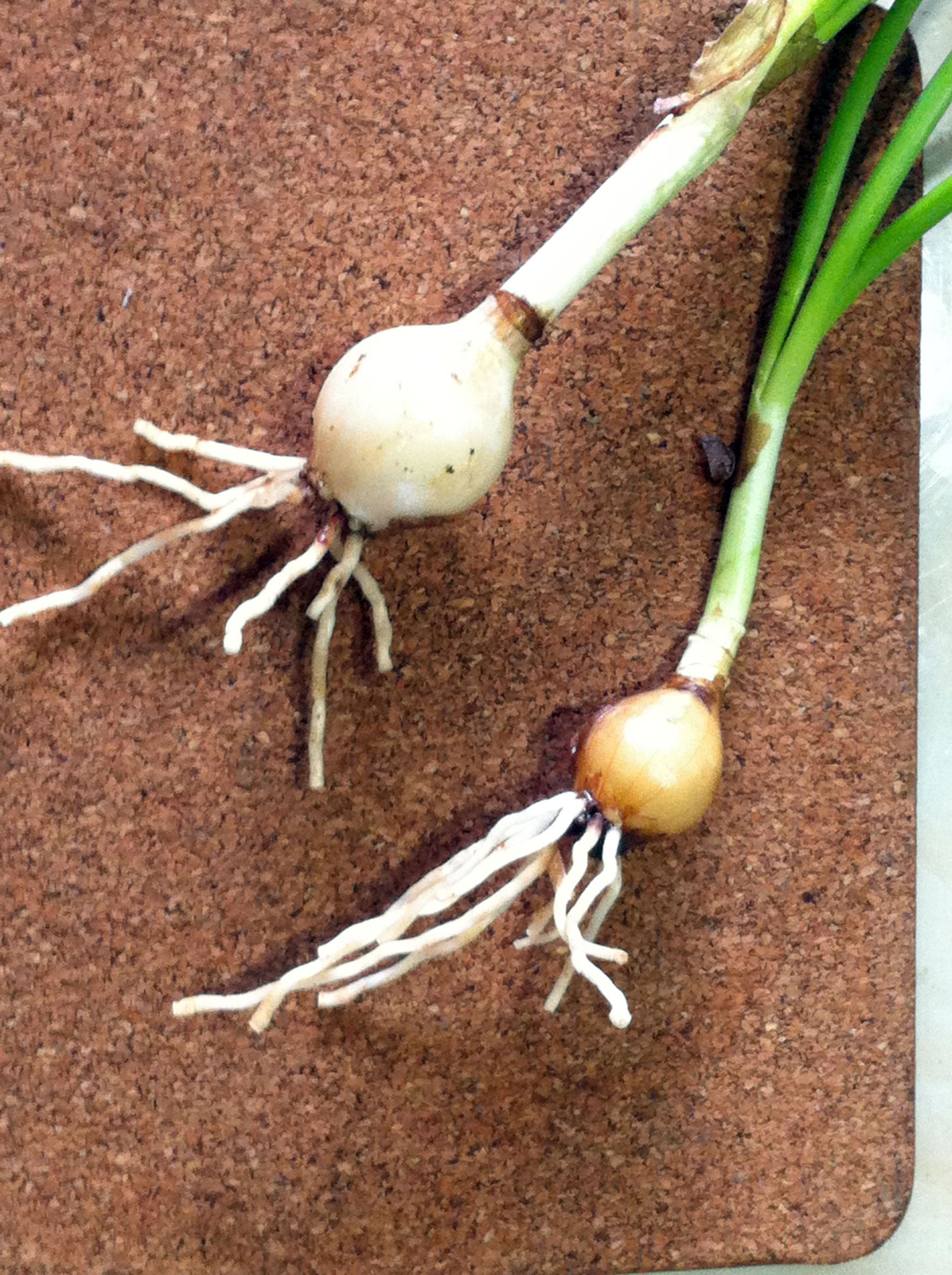
It is botanically known as Zephyranthes candida. It is commonly called the Autumn Zephyr Lily, Rain Lily or Peruvian Swamp Lily.
It is native to South America and is widely cultivated as an ornamental plant locally. It grows best under direct sunlight and often flowers after rain, during drier periods.
Its narrow, flat leaves look like those of the garlic or Chinese chives (Allium tuberosum).
Unlike the latter, the foliage of the Rain Lily is said to have toxic compounds and is not suitable for consumption.
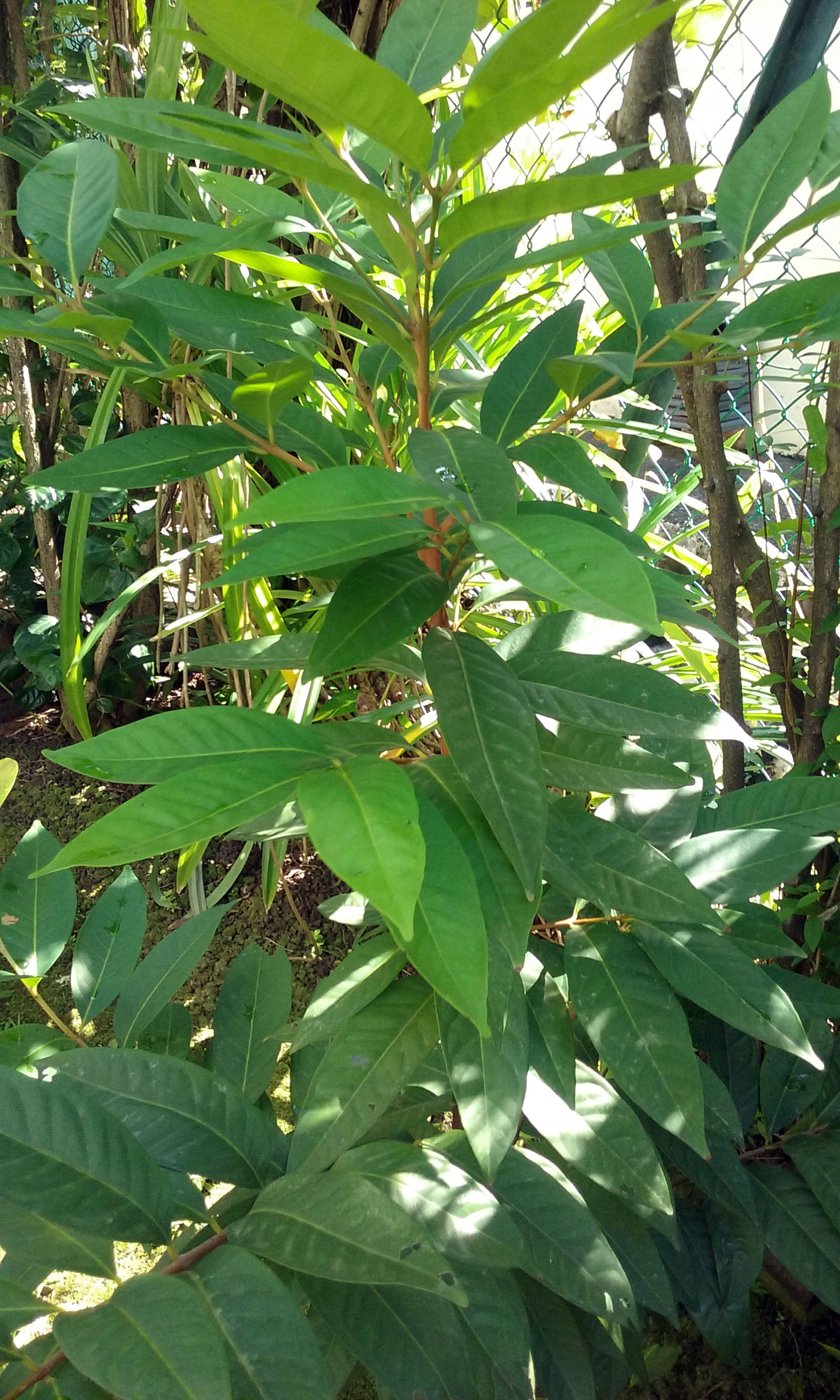
Indonesian Bay Leaf used for cooking
This plant (left) grows on its own in my small garden. What is it? If it grows into a big tree, will the roots damage the concrete flooring nearby?
Tan Boh See
The plant could be the young plant of the Daun Salam, which is also known as Indonesian Bay Leaf. Botanically known as Syzygium polyanthum and a member of the guava family (Myrtaceae), it is a tree that is planted in some parks and along some roads.
Its leaves are sold in Geylang Serai for use in Indonesian and Malay cooking. It produces small fruits that are eaten and dispersed by birds via their droppings - which is why the plant appears in your garden.
If the growing patch is narrow with concrete areas surrounding it, you may want to remove the plant to avoid future problems.
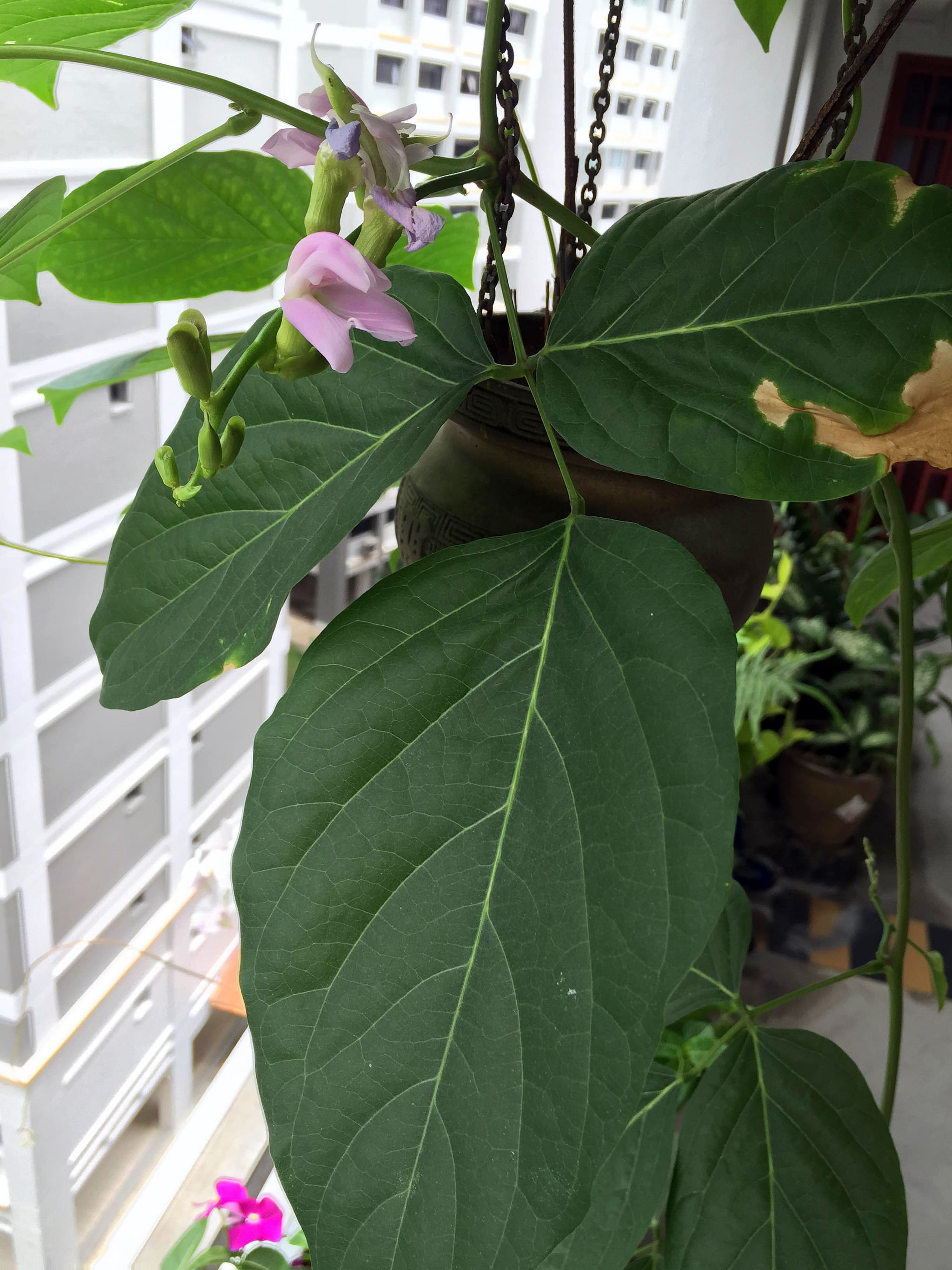
Sword Bean is edible when its seeds are cooked right
A few months ago, my friend gave me a seed she got from China. I planted it in a pot outside my corridor. The plant grew fast and, in a few weeks, it was tall enough to touch the ceiling. A week ago, purple flowers (left) started to bloom. What is it?
Bobby Sim
It may be the Sword Bean (its botanical name is Canavalia gladiata). It is a medicinal and edible plant which is sometimes grown in Singapore community gardens.
Years ago, its large pink seeds, which were etched with lucky numbers or auspicious messages, were sold in golden egg-shaped containers as festive do-it-yourself plants for the Chinese New Year.
It is a large growing vine from the bean family (Fabaceae) and needs support to climb on. Its young tender seed pods are harvested and cooked before being eaten as a vegetable.
Its mature seeds need tedious processing and cooking before they are safe to eat as they have anti- nutritional substances. There is another related species (Canavalia ensiformis) with white seeds.
Tip: Rose Myrtle a good peach blossom festive substitute
The Rose Myrtle (, its botanical name is Rhodomyrtus tomentosa) is a member of the guava family (Myrtaceae). It is a medicinal plant and a species that is native to the region where it grows in exposed, sandy areas on the seashore.
It produces edible fruits which are purple when ripe.
The Rose Myrtle produces peach blossom-like flowers that change colour as they age. They start out dark pink and gradually fade to a very light pink before they fall off.
It is a plant that makes a good peach blossom substitute for the tropics for Chinese New Year. It is best suited for a sunny, outdoor location with well-draining soil.
Too much sun may cause Zamioculcas' yellowing leaves
I have had this pot of Zamioculcas for almost two years. Recently, the tips of some of the leaves turned yellow. Why did this happen?
Tan Pin Ho
You may want to check if your plant is grown under direct sunlight or watered excessively.
The ZZ plant, as it is commonly called, grows naturally in lightly shaded areas in African dry grassland and lowland forests.
Under direct, intense sunlight, the leaves can become bleached and yellow. You may want to move it to a shadier area if this is the case.
Optimal light conditions would be filtered sunlight for at least four hours daily. Note that although it is often sold as an indoor plant, it does not do well in deep shade indoors.
Next, check whether your plant is pot-bound. The roots may have filled the pot entirely.
You may want to move it to a larger pot with fresh, well-draining potting mix. Roots that have filled the pot will have very little soil volume left and nutrients needed for growth may have been exhausted.
Finally, an excessively wet root zone may sometimes cause plants to develop light yellow leaves.
In this case, you may want to let your plant dry out partially before you water it again.
Avoid standing the plant in water or using a moisture-retentive soil mix to grow this plant.
•Answers by Dr Wilson Wong, a certified practising horticulturist and founder of Green Culture Singapore (www.greenculturesg. com). He is also an NParks-certified park manager.
•Have a gardening query? E-mail it with clear, high-resolution pictures of at least 1MB, if any, and your full name to stlife@sph.com.sg
